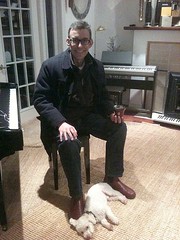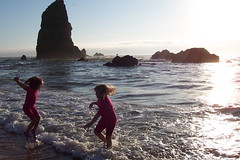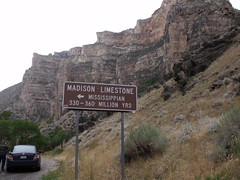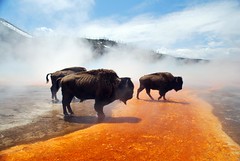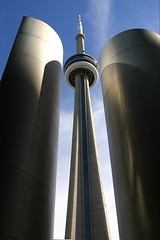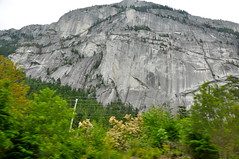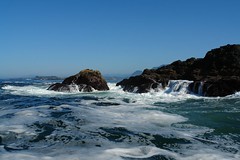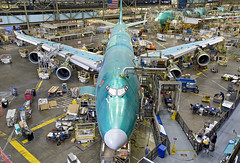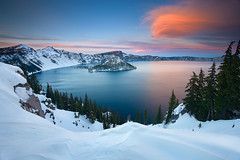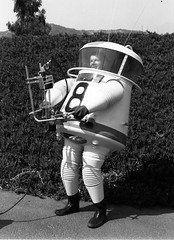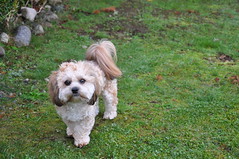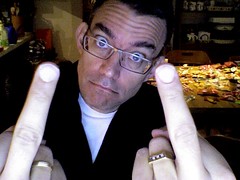My pre-death announcement over the weekend turned into a monster: a huge spike in my regular number of daily website visitors, dozens and dozens of comments (I didn't even know that Movable Type breaks them into pages of 50 until now), similar numbers of Twitter links and Facebook "likes" (my friends Bill and Darren mocked up a preferable "un-fucking-like" button instead), and quite a few emails and phone calls. It looks like I'll be on CBC Radio with Stephen Quinn again this week too.
Thank you to everyone who wrote. It's overwhelming. I joked on Twitter:
Social Media Guru Tip of the Week™: Need traffic/comments? Simply develop a terminal disease and announce it on your blog! Ask me how!
If you find that in poor taste, sorry, but I think you'll have to get used to it. As my wife Air says, either we laugh or we cry.
Anyway, I'll admit, this is exactly what I hoped would happen. I've been a compulsive writer all my life. Like Tim Bray, I can't not write, but I've never been able to keep a diary, because I've always wanted an audience. I write my blog for myself, of course, and as something for my family and friends, as a record of my thoughts. But deep down, selfishly, I also want an audience of strangers, people who know me because of my writing, and who find some value in what I publish on its own merits, not because they are my friend or my
relative.
Sometimes I've found such an audience in magazines, or on television or radio, or even among people who never knew I was the one who'd written the instructions for their wireless modem. And I've genuinely found it here on my blog, more so than I could have imagined back in 2000 when I started it.
So, instead of getting paid, it's largely for the boost to my ego—and because I'm glad readers find value in my stuff—that I put together long series of posts on why cameras work the way they do, or on my opinions about religion and science, or about music and podcasting, and other topics. That's why I try to write something every day, on average (though I haven't managed it recently). It also keeps me in practice both writing and editing my own work.
What is comforting?
My most important legacy is with my wife and my two daughters, but that is a personal one, in the real world, a legacy that is quite peripheral to my writing, quite local, quite private. In public, it's what I write and say that might have an impact.
Yesterday, I received two especially moving emails. One was from someone who's been reading my blog for several years, but who'd never commented or written to me before. She told me that her father almost died last year, and that some of my posts about death had helped her handle the ordeal.
Like me, she doesn't believe in spirits, souls, or an afterlife, so she appreciated my take on thinking about death without them, while considering the joy that trying to understand life on its own terms can bring to the human mind and heart. To try to see the Universe as it really is, to understand how it works—and, so often, to succeed!—how can mere myths compete with that?
What, I wondered after reading her message, do I find comforting? To know that we are all made of star stuff (in Carl Sagan's phrase, or Moby's), and will be again; to know that every other living thing on Earth is our cousin; to see a blob in the sky and know it's the Andromeda Galaxy, as it was 2 million years ago; not to worry that life is some sort of perverse final exam, and to know instead that when it is over, that really is the end for each of us. Those things comfort me, not sadden me. Some find that hard to understand, but I hope what I write can help explain my feelings about it.
Not to fight
The second email was from someone I do know, whose brother died of cancer about a decade ago. She recalled when he concluded that the treatments weren't working, and how he decided to live after that, for however short a time. (It was a few months.) She wrote that "he may have stopped taking treatments, but he did not stop fighting."
I agree with her sentiment, but I would change one word now, after four years: "fight." I've used that word a lot too, but Christopher Hitchens made me think of it differently after he got cancer this year. It will probably kill him too. He wrote:
People don't have cancer: they are reported to be battling cancer. No well-wisher omits the combative image: You can beat this. It’s even in obituaries for cancer losers, as if one might reasonably say of someone that they died after a long and brave struggle with mortality.
He's right. Why must it be a fight, a war, a battle? (And Hitchens is no stranger to battles.) Those are stressful, soul-draining nouns, with images of violence and winners and losers.
I think less personally about my cancer than I used to. I fought it hard, I used to tell it to fuck off, I used to imagine the chemo snuffing it out like carpet bombing over Cambodia. More recently I've thought instead, no, cancer has no mind, no evil intent, no demon driving it. It is my own cells, my own tissue, malfunctioning, not able to stop growing when they're supposed to, not capable of doing their job of making body parts that keep me alive.
My cancer is a random, unthinking, physiological mistake. Some mutations cause cancer, some lead to new and wonderful forms of life. I got the bad one. For me now, my cancer is no more malevolent than bad weather, or an earthquake, or a rock I stub my toe on, or the asteroid that killed the dinosaurs. There's no point getting angry at a rock, nor at my cancer, especially now.
I hate that it will kill me, and what that will do to my family. It's sad and unfair. But there's no one and nothing to blame. It's a pure example of "shit happens." (Oh, does it ever.) Like my correspondent's brother, my time has come to win the battle by not fighting anymore, by pushing back against the desire to treat the end of my life as a war and myself as a soldier. We all deserve better than war, whether in the mountains of Afghanistan or in the brain of a cancer patient like me.
I'll live my life, and when it's time to stop, I hope I can accept that when face-to-face with it. In some ways I have it easy: the hardest part is for everyone else, after I'm dead. By then I'll be gone, with not a care (or a thought, or a feeling) in the world. Lucky me?

